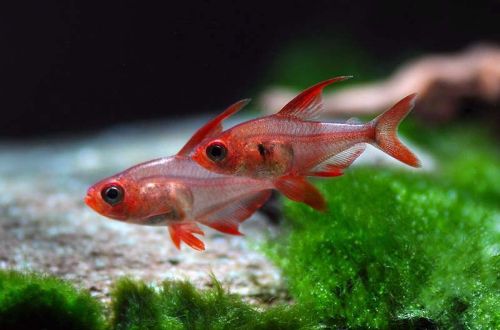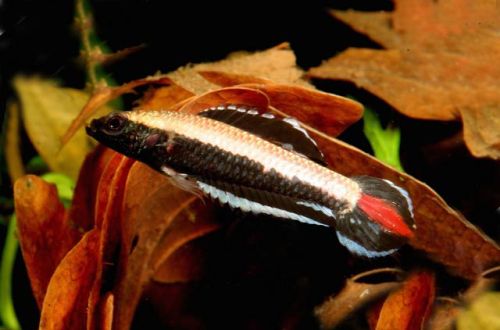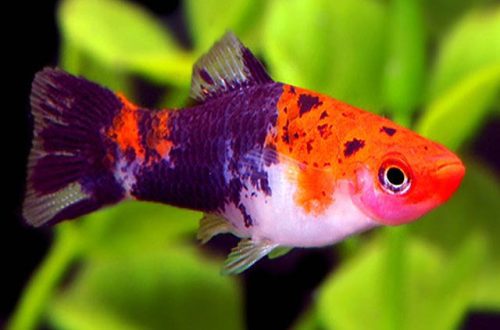
Tetradon Lorte
Tetradon Lorte, scientific name Carinotetraodon lorteti, belongs to the family Tetraodontidae (Puffers). Presumably named after the French zoologist Louis Charles Emile Lorte (1836-1909).
Contents
Habitat
The fish is native to Southeast Asia. Inhabits the lower basin of the Mekong River in Thailand, Vietnam and Cambodia.
Inhabits sedentary and stagnant waters in shady forest streams, small tributaries and floodplains. The bottom is covered with a layer of fallen leaves, branches and other snags. Dense aquatic vegetation mainly grows along the coast.
Description
Adults reach a length of about 6 cm. The fish has a large, dense oval body. It swims slowly, but thanks to well-developed, albeit short, fins, shifted closer to the tail, it maneuvers perfectly.
Males are uniformly colored with a predominance of dark gray and olive hues. The dorsal fin is bright red. Females show a yellowish coloration with a reticulate pattern.
For the characteristic red color of the eyes, it is included in the group called “Red-eyed fugu”, which also includes the Red-eyed and Bornean tetradons.
Behavior and Compatibility
Small but grumpy fish. It does not get along well with relatives (in conditions of small aquariums), showing aggressive and territorial behavior. Other fish are also at risk, as Tetradon Lorte tends to pick off pieces from their fins.
Brief information:
- The volume of the aquarium – from 50 liters.
- Temperature – 20-28°C
- Value pH — 5.0–7.5
- Water hardness – soft to medium hard (5-15 dGH)
- Substrate type – sandy
- Lighting – subdued
- Brackish water – no
- Water movement – little or no
- The size of the fish is about 6 cm.
- Nutrition – live, fresh or frozen food, dry solid food
- Temperament – inhospitable
- Keeping alone in a small aquarium
Maintenance and care, arrangement of aquariums
The optimal size of the aquarium for one fish starts from 50 liters. In the design, it is necessary to use a lot of snags and thickets of plants, including floating ones. At the bottom, you can place a layer of fallen leaves of some trees.
For long-term keeping, it is important to ensure stable water conditions and avoid excessive accumulation of organic waste. The movement of water should be minimized, the fish is not able to resist a strong internal current.
Food
The fish lack full-fledged teeth, and the jawbone has been transformed into four fused toothed structures in pairs. They are constantly growing, but in nature they constantly grind on solid food, such as the shells and shells of crustaceans and snails.
Thus, there is a need to provide adequate food. The basis of the diet can be snails, unpeeled pieces of shrimp, chopped clams, live or frozen brine shrimp, bloodworms, daphnia.
It is permissible to use dry food, but only as an addition to the main food. When choosing dry products, it is worth giving preference to feeds produced in the form of granules, tablets and other forms of solid consistency.
Sources: fishbase.org, wikipedia.org





